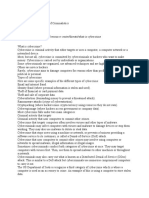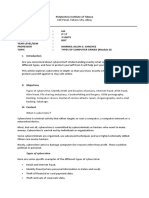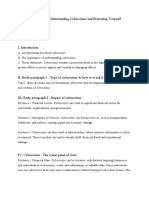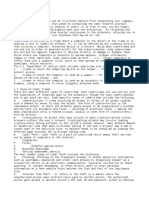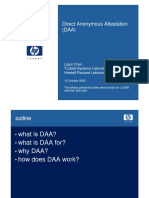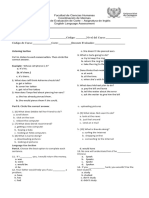0% found this document useful (0 votes)
94 views3 pagesWhat Is Cybercrime?
This document discusses cybercrime and how to protect against it. Cybercrime involves criminal activity that targets or uses computers and networks. Examples include email fraud, identity theft, data theft, ransomware attacks, and cyberespionage. To protect yourself, keep software and operating systems updated, use antivirus software and strong passwords, and do not open attachments from unknown senders.
Uploaded by
JoshuaFrom YTCopyright
© © All Rights Reserved
We take content rights seriously. If you suspect this is your content, claim it here.
Available Formats
Download as DOCX, PDF, TXT or read online on Scribd
0% found this document useful (0 votes)
94 views3 pagesWhat Is Cybercrime?
This document discusses cybercrime and how to protect against it. Cybercrime involves criminal activity that targets or uses computers and networks. Examples include email fraud, identity theft, data theft, ransomware attacks, and cyberespionage. To protect yourself, keep software and operating systems updated, use antivirus software and strong passwords, and do not open attachments from unknown senders.
Uploaded by
JoshuaFrom YTCopyright
© © All Rights Reserved
We take content rights seriously. If you suspect this is your content, claim it here.
Available Formats
Download as DOCX, PDF, TXT or read online on Scribd
/ 3



